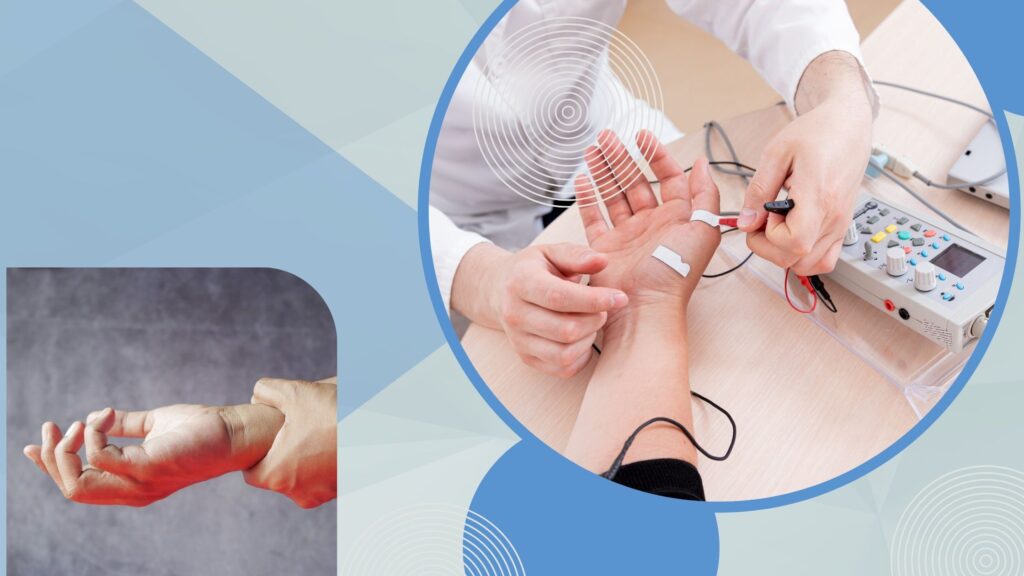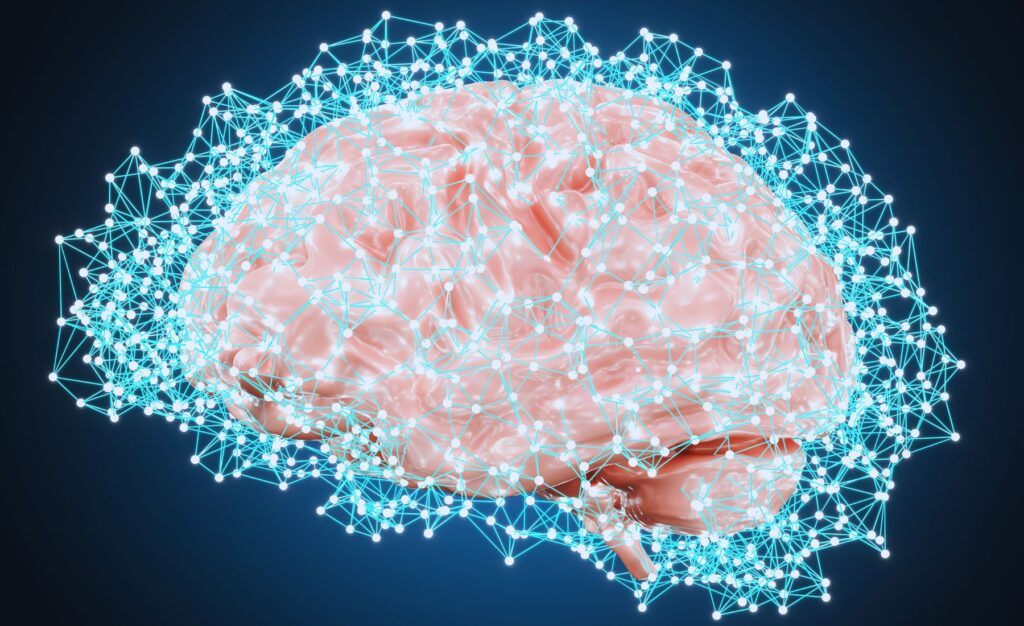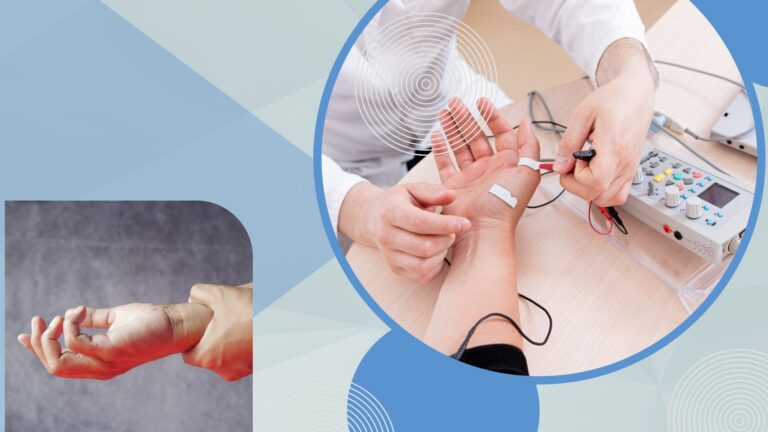Recognizing the signs of a neurological disorder early can be life-saving for many adults. Neurological disorders affect the brain, spinal cord, and nerves, causing memory loss, tremors, and other symptoms that affect quality of life. Without intervention and management, unchecked neurological symptoms can quickly degrade without any way to reverse the impact on the mind and body.
Caught early, symptoms can be managed and slowed; many neurological disorders have no cure. This is why, when it comes to the brain, every minute matters. Neurological symptoms are the body’s way of communicating that something is wrong. With the right knowledge, you can catch the symptoms of a stroke, cognitive disorder, and more before it deteriorates your or a loved one’s health.
Learn the signs, know when to contact your doctor, and what documentation to provide your neurologist for the best assessment available.
Why It Matters
Did you know? According to the World Health Organization, around one million people suffer from impactful disorders like Epilepsy, Strokes, Migraine, and Dementia.
Note: Content on neuromedpa.com is not doctor’s advice and should not be taken as such. Always contact your primary care doctor for medical services, diagnosis, treatment, and more.
1) Severe and Sudden-Onset Headaches
Sudden, severe headaches are often a warning of something more. Unlike common tension headaches or stress headaches, severe headaches can indicate potentially life-threatening conditions requiring immediate medical attention. These intense pain episodes may signal anything from bleeding in the brain to dangerous infections, making them important neurological symptoms not to ignore.
When Headaches are a Sign of a Neurological Emergency: Thunderclap Headaches
How do you know when a headache is simply a headache and when it is something more? The most common headache associated with a neurological emergency is the thunderclap headache—explosive pain reaching maximum intensity within 60 seconds.
This type of headache affects fewer than 50 out of 100,000 adults annually, but it requires emergency attention. While sometimes harmless, approximately 10% of thunderclap headaches indicate bleeding in the brain, which can be fatal.
Signs of a Thunderclap Headache:
- Pain described as “the worst headache of my life”
- Sudden onset within a minute that lasts up to 5 minutes
- Numbness or weakness
- Speech changes
- Vision problems
- Confusion
Headache Symptoms Linked to Neurological Disorders
Severe, sudden pain from a headache may indicate a brain aneurysm, often accompanied by nausea, vomiting, or sudden vision loss. Pain that worsens over time might suggest multiple sclerosis, where nerve damage triggers headaches as part of broader neurological dysfunction.
Most notably, headaches related to vascular issues like subarachnoid hemorrhage typically have an explosive onset—described as feeling like “thunder hitting you all of a sudden”. Headaches associated with neurological disorders frequently present alongside other symptoms, including:
- Balance problems or coordination difficulties
- Speech changes or slurring
- Confusion or altered mental status
- Weakness in limbs or face
- Vision disturbances
When to Visit a Neurologist for Headaches
For headaches without life-threatening symptoms, schedule an appointment with your primary care physician first, who can refer you to a neurologist if necessary. However, never hesitate to seek emergency care for headaches that feel unusually severe or different from typical patterns—doing so could save your life or the life of a loved one.
- Two or more headaches weekly
- Headaches requiring regular over-the-counter medication (5+ days monthly)
- Headaches that prevent normal activities (“disabling headaches”)
- Headaches with sensitivity to light/sound, nausea, or weakness

2) Numbness and Tingling
Unprovoked tingling sensations and unexplained numbness are often symptoms of underlying neurological concerns, especially in the limbs. Persistent numbness or tingling represents a potentially serious sign of nerve damage.
Although occasionally harmless (like when a limb “falls asleep”), ongoing numbness and tingling often indicate medical conditions requiring treatment. Many people dismiss these symptoms until significant damage occurs. Left untreated, numbness and tingling can lead to:
- Increased risk of falls and injuries
- Difficulty with daily activities, including walking and driving
- Delayed recognition of injuries or infections
- Permanent nerve damage affecting bodily functions
Numbness and Tingling May Be Early Signs of Neurological Disorders
Numbness and tingling are often early warning signs of serious neurological conditions. These symptoms typically begin in the extremities—especially the feet—before progressing upward.
Persistent symptoms may indicate underlying conditions like multiple sclerosis, stroke, transient ischemic attack, diabetes, carpal tunnel syndrome, or peripheral neuropathy. For diabetic patients especially, these symptoms often signal nerve damage requiring immediate attention.
What to Look For:
- Gradual onset of prickling or tingling sensations in hands or feet
- Sensations that spread upward into legs and arms
- Numbness accompanied by burning or shooting pain
- Symptoms affecting the same body part on both sides
What To Do if Numbness and Tingling Persist
- Document when symptoms began
- Note how quickly they developed
- Notice activities associated with symptom onset
- Any accompanying symptoms like weakness or pain
When to See a Neurologist for Numbness and Tingling
Contact a healthcare provider for numbness affecting both sides of the body (like both hands or feet), symptoms that aren’t related to posture, numbness that affects walking ability, or tingling accompanied by pain.
Assessments typically include a neurological exam that tests sensation, strength, and reflexes, plus blood tests for underlying causes like diabetes or vitamin deficiencies. Early evaluation by a neurologist can prevent permanent nerve damage and identify treatable underlying conditions. Many neurological disorders causing numbness respond well to early intervention, making timely attention important for preserving function and preventing disability.
- Increased muscle weakness or inability to move
- Loss of bladder or bowel control
- Confusion or loss of consciousness
- Slurred speech or vision changes
- Symptoms following head, neck, or back injury

3) Vision Changes
Vision changes or sudden vision loss may be signs of a neurological disorder that should not be dismissed. Unlike gradual vision deterioration from age-related conditions, neurological vision changes often appear suddenly and may affect only one eye. These symptoms can indicate serious conditions where immediate intervention can dramatically improve the outcome.
Vision Loss as a Sign of a Neurological Disorder
Neurological vision problems vary—some develop rapidly, while others progress over weeks or months. Common changes in vision include:
- Vision loss
- Eye pain
- Double vision
- Blurriness
- Light sensitivity
- Seeing spots and zig-zag patterns
What To Do If You Notice Sudden Onset of Vision Changes
Do not wait to see if symptoms resolve on their own. Assuming the problem will disappear can worsen the situation. Vision changes require timely evaluation by an eye specialist or neurologist who can determine if symptoms indicate a neurological disorder.
- Document when symptoms began
- Notice whether one or both eyes are affected
- Note if pain accompanies the vision changes
- List any accompanying symptoms like headache or weakness
When to See a Neurologist for Vision Changes
- Sudden, painless vision loss or changes
- Vision loss accompanied by severe headache
- Double vision with sudden onset
- Vision changes after head trauma
- Any vision change that develops extremely rapidly

4) Cognitive Decline or Memory Loss
Memory lapses happen to everyone, but persistent memory loss, confusion, and other cognitive decline require attention. Understanding when normal forgetfulness crosses into concerning territory can mean the difference between early intervention and delayed treatment.
Memory Loss as an Early Symptom of Neurological Disorders
Memory loss is often one of the first signs of a neurological condition. Unlike occasional forgetfulness, memory problems typically include difficulty remembering recent events, conversations, appointments, or the location of commonly used items.
As memory difficulties progress, individuals may experience dangerous lapses such as forgetting to turn off appliances, lock doors, or monitor dependents. Several warning signs help tell the difference between normal age-related changes vs. potentially serious neurological symptoms:
- Repetitive questioning about the same information
- Getting lost in familiar environments
- Struggling with once-simple tasks like cooking or driving
- Having difficulty following conversations or plots of books/movies
- Experiencing noticeable trouble finding words or naming objects
What To Do If You Notice Memory Changes
- Notice when symptoms began and how quickly they developed
- Take care to see whether they affect daily functioning
- Document any accompanying symptoms like personality changes or speech difficulties
- Consult a healthcare provider who may recommend cognitive screening tests
When to Consult a Neurologist
- Confusion or altered consciousness
- Rapid symptom onset (may indicate conditions like a brain tumor)
- Loss of ability to perform daily activities
- Symptoms of depression alongside memory changes
- Memory loss disrupting daily life
- Difficulty planning or solving previously manageable problems
- Confusion about time or place
- Problems finding words or completing sentences
- Poor judgment or decision-making abilities

5) Muscle Weakness
Unexplained muscle weakness or paralysis represents one of the most alarming signs of a neurological disorder, often indicating serious underlying conditions. Unlike general fatigue, true muscle weakness means muscles cannot generate normal force even with full effort.
Muscle Weakness as a Neurological Symptom
True neurological muscle weakness differs from feeling tired or exhausted. It occurs when communication between the brain and muscles becomes disrupted, preventing normal muscle contraction. This disruption may affect a single limb, one side of the body, or multiple areas simultaneously.
- Difficulty performing previously simple tasks like climbing stairs
- Drooping facial features on one or both sides
- Inability to lift objects or raise limbs against gravity
- Progressively worsening weakness over hours or days
Muscle Weakness May Indicate Several Neurological Conditions
- Stroke
- MS
- Spinal cord injuries
- Guillain-Barré syndrome
- Myasthenia gravis
- Transient ischemic attacks
What To Do With Sudden Onset Muscle Weakness
- Note exactly when symptoms began
- Record which body parts are affected
- Document any accompanying symptoms (headache, vision changes, etc.)
- Track progression—is weakness getting worse?

6) Tremors
Involuntary shaking or jerky movements can indicate underlying neurological problems requiring medical attention. A tremor, a rhythmic shaking movement affecting one or more parts of the body, commonly affects the hands but may also involve arms, head, vocal cords, and torso.
Tremors as Signs of Neurological Disorders in Adults
Tremors affect men and women equally and become most common among middle-aged and older adults. They typically result from problems in brain areas controlling movement.
- Rhythmic shaking of hands, arms, head, legs, or torso
- Shaky voice during speech
- Difficulty with writing or drawing
- Problems holding and controlling utensils or tools
What To Do if Tremors Interfere with Daily Life
- Document tremor characteristics (frequency, triggers, affected body parts)
- Consider physical or occupational therapy to improve control
- Reduce caffeine consumption and manage stress
- Try assistive devices like weighted utensils for eating
- Maintain consistent medication schedules if prescribed
When to Seek a Diagnosis
- Tremors begin suddenly or worsen rapidly
- Tremors significantly interfere with daily activities
- The tremors occur alongside other neurological symptoms
- You notice the tremors appear on only one side of the body

7) Balance and Coordination Problems
Balance problems are most often problems from the brain, inner ear, or nervous system. Coordination symptoms frequently indicate underlying neurological conditions rather than everyday clumsiness.
Neurological Disorders that Affect Coordination
- MS
- Parkison’s
- Ataxia
- Strokes
- Traumatic brain injury
- Cerebellar degeneration from prolonged alcohol use
- Various genetic conditions
What To Do if You Experience Balance Problems
If you or a loved one is experiencing balance problems, maintaining detailed records helps doctors determine the right treatment. You want to document when symptoms occur, activities that trigger them, and accompanying symptoms like dizziness or nausea. To help prevent accidents, consider removing tripping hazards from walkways, installing nightlights, and using nonskid mats in bathrooms while waiting on treatment.
When To See a Neurologist for Balance and Coordination
- If coordination problems appear suddenly after a fall or accident
- If you also experience numbness on one side of the body
- Issues last for more than a few days

8) Speech Changes and Slurring
Slurred speech or difficulty forming words often indicates a neurological disorder. Speech requires precise coordination between the brain, nerves, and facial muscles—including the tongue, lips, and jaw—making it a sometimes clear sign of a neurological disorder.
When Speech Changes Are a Sign of a Neurological Disorder
- Slurred speech
- Difficulty moving the mouth, tongue, or lips
- Hesitations and pauses while talking
- Speaking in short bursts vs sentences
- Changes in voice quality (nasal, strained, monotone)
What Slurred Speech May Be a Sign Of
- Stroke
- Brain tumors
- Traumatic brain injuries
- Parkison’s
- MS
- ALS
- Aphasia
- Apraxia

9) Siezures
Where fainting spells typically involve brief consciousness loss, seizures occur from abnormal electrical discharges. When seizures occur, it is important to take note of how long the seizure lasted, what happened before the seizure, and any other symptoms you or a loved one notices.
What Causes Seizures in Adults
- High fever
- Brain infections
- Serious illness (including COVID-19)
- Sleep deprivation
- Low blood sodium
- Certain medications
- Recent brain trauma or stroke
- Substance use (amphetamines, cocaine)
- Alcohol misuse or withdrawal
What To Do During and After a Seizure
- Position their head to maintain an open airway
- Provide space; move dangerous objects away
- Note the time the seizure starts
- Do not hold the person down or put anything in their mouth
- Stay with them until fully recovered
- Afterward, help the person reorient by gently explaining what happened and allowing rest
When a Seizure is An Emergency
- The seizure lasts longer than 5 minutes
- The person doesn’t regain consciousness
- Another seizure follows immediately
- Breathing difficulties occur after the seizure
- The seizure happens in water
- An injury occurred during the seizure
- The person has no history of seizures
- The person has diabetes and loses consciousness
- The person is pregnant

Recognizing the Signs of a Neurological Disorder Early
Recognizing the warning signs of neurological disorders early can drastically improve treatment outcomes and reduce the risk of permanent damage. Understanding the warning signs allows individuals to take action when minutes or hours can make a difference. Knowing when to seek emergency care versus scheduling a routine appointment helps patients receive appropriate treatment at the right time.
Though experiencing any of these symptoms can feel frightening, patients should remember that many neurological conditions are manageable or even treatable when addressed timely. Documenting specific symptoms helps healthcare providers make accurate diagnoses and develop effective treatment plans.
Anyone experiencing concerning neurological symptoms or noticing them in loved ones should contact a Neurologist in Maryland today for proper evaluation and peace of mind. Taking this proactive step can prevent complications and ensure access to specialized care when needed.
FAQs
What are neurological symptoms that should never be ignored?
Key symptoms to watch for include sudden severe headaches, unexplained numbness or tingling, vision changes, cognitive decline, muscle weakness, tremors, balance problems, speech difficulties, and seizures. These can indicate serious neurological conditions requiring prompt medical attention.
How quickly should I seek medical care for sudden neurological symptoms?
For symptoms like sudden severe headache, one-sided weakness, vision loss, or slurred speech, seek emergency care immediately. These could indicate life-threatening conditions like stroke where every minute matters for treatment outcomes. For less urgent but persistent symptoms, consult a doctor within a few days.
Can neurological symptoms come and go?
Yes, some neurological symptoms can be intermittent. For example, early multiple sclerosis may cause temporary vision problems or numbness. However, recurring symptoms should still be evaluated by a healthcare professional, as they may signal an underlying condition requiring treatment.
Are all tremors a sign of Parkinson’s disease?
No, not all tremors indicate Parkinson’s disease. While Parkinson’s often causes resting tremors, many people experience essential tremor, which typically occurs during movement. Other conditions can also cause tremors. A proper medical evaluation is needed to determine the underlying cause.
How can I tell if memory problems are normal aging or a sign of dementia?
Normal age-related memory changes typically don’t interfere significantly with daily life. Signs that may indicate dementia include frequently forgetting recently learned information, difficulty completing familiar tasks, problems with planning or problem-solving, and confusion about time or place. If memory issues are causing concern, it’s best to consult a healthcare provider for evaluation.

Neurological Medicine, P.A.
Neurological Medicine, P.A., provides comprehensive diagnostic and treatment services to patients with conditions affecting the brain, spinal cord, nerves, and muscles. We have been serving the Prince George’s and Montgomery County area since 1975, with two offices: Greenbelt and Laurel. We offer complete adult neurological care as well as in-office neurodiagnostic studies.
- Neurological Medicine, P.A.#molongui-disabled-link
- Neurological Medicine, P.A.#molongui-disabled-link
- Neurological Medicine, P.A.#molongui-disabled-link
- Neurological Medicine, P.A.#molongui-disabled-link



